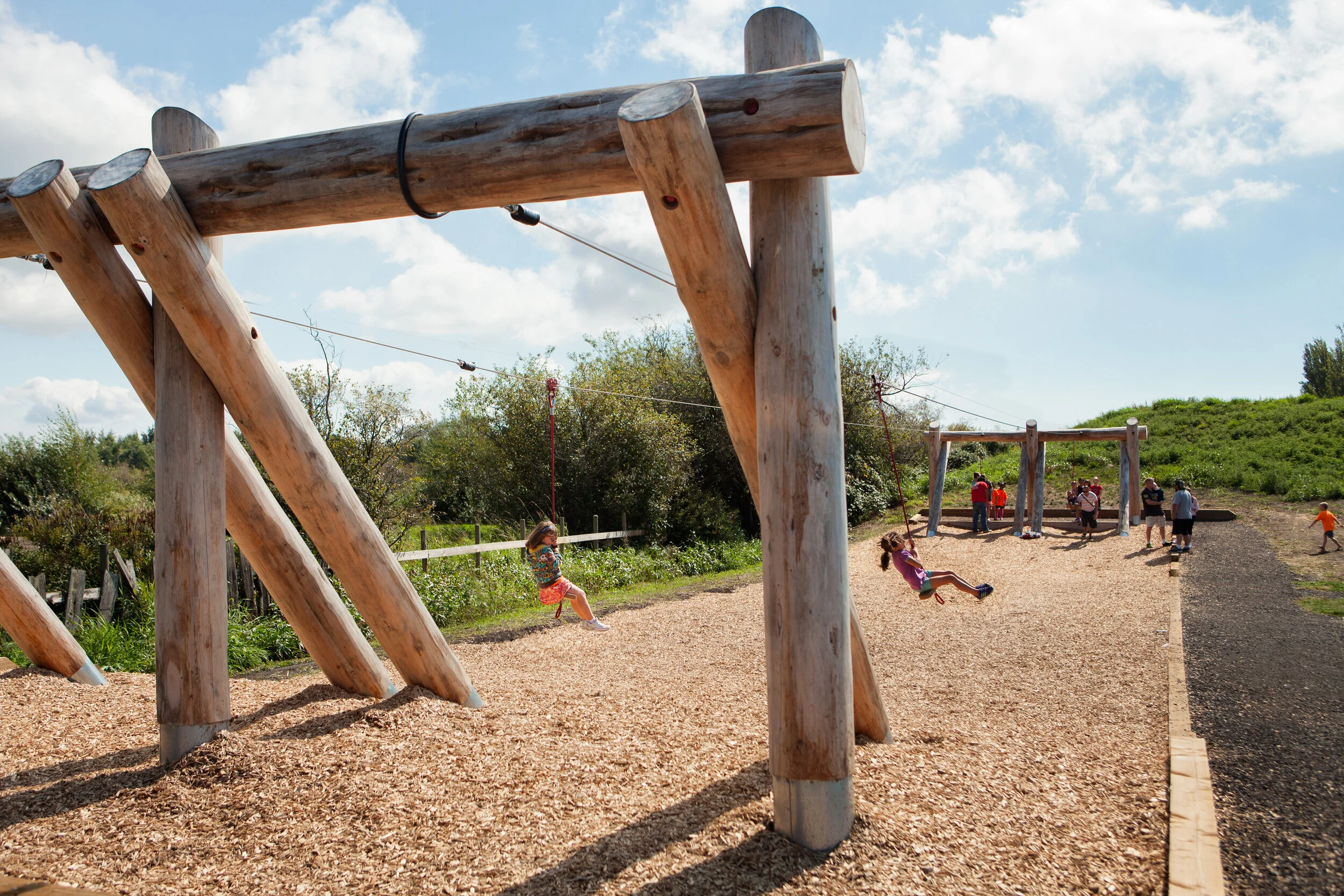In a culture bent on organizing and standardizing everything in our world, PLAY is generally regarded as something we do to take a break from the seriousness of life - in other words, the thing we do that has no purpose. This separation between Play and Purpose, however, overlooks the fundamental role of Play in our lives. The rapidly growing consensus today is that humans are innately designed to collect information, cultivate creative thinking and develop skills ranging from fine motor coordination all the way through to social behaviour and bonding through the act of PLAY.
Meanwhile, as our population centres become more urbanized, our young people become more distant from the natural world and all the valuable lessons and connections available to us there. Increasingly, we are left to fill our need for connection to nature at a municipal park, expertly manicured and with play structures made from man-made synthetic materials that make no connection to the organic world from which we all hail. It is from this super-controlled environment that parents, teachers, designers, civic leaders and, most importantly kids, have created a groundswell of demand for access to Natural Play.
Beyond the desire for more connection to nature, one of the central tenets of this Natural Play movement is risky play. Young children - being blissfully unaware of their limitations - have some pretty simple and effective ways of testing the safety of things: they put their hands on things, they put things in their mouth, they push things, they pull things. Then, if it hasn’t bitten back or fed back some other piece of alarming information, they carry on playing with it. Without some empirical data that says “danger,” a child will explore the outer edges of their comfort zone with pretty limited caution. It usually isn’t until a terrified adult, or otherwise ill-programmed child, screeches some caution that the exploring child considers that their activity may not be safe. And in that same moment, the opportunity within that risk disappears.
What could have been an opportunity to test the child’s tactile and cognitive skills - thereby developing confidence, resilience and executive functioning abilities - is lost, if only for the time being. That child will continue to push boundaries until they have been made to fear everything in their environment as a possible risk of danger or injury; and given that life, itself, has embedded risk (financial, social, emotional and physical), teaching children life skills in the absence of risk is just setting them up to learn a heard reality later on.
This disconnection from nature and absence of risky play is what we are pushing back against. By design, and with local and organic materials, KinsolPlay is recreating access for children (and parents) to experiences which create growth opportunities and resilience through play while connecting them back to nature. Life is loaded with risk for adults, so creating play environments that introduce children to risk in a way which allows them to build confidence and a healthy tolerance to risk is setting them up to become successful and happy adults.


